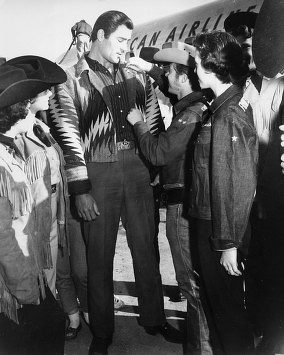Badge
Badge refers to a distinctive emblem or mark typically worn to signify membership, achievement, authority, or participation in a particular group or event. Badges can be made from a wide range of materials including metal, plastic, fabric, and paper, and they often feature symbols, colors, or text relevant to their purpose. They are used in various contexts, from the military and law enforcement to conferences, sports, and entertainment.
History[edit | edit source]
The use of badges dates back to ancient times, where they were used as symbols of rank, profession, or affiliation. In medieval Europe, badges were worn by knights and soldiers to identify them on the battlefield. The practice evolved over time, and by the 19th and 20th centuries, badges became popular for use in schools, by clubs and organizations, and in the workplace to denote membership, achievement, or authority.
Types of Badges[edit | edit source]
There are several types of badges, each serving different purposes:
- Identification Badges: Used by organizations to identify members, employees, or officials. These often contain a photo, name, and position of the individual.
- Military Badges: Awarded to military personnel to signify rank, specialization, or commendation.
- Merit Badges: Used in scouting and other youth organizations to signify the completion of certain achievements or mastery of specific skills.
- Button Badges: A popular form of badge, often used for promotional or commemorative purposes, featuring a design or message.
- Name Badges: Worn at events or in workplaces to display the wearer's name for ease of identification.
- Police Badges: Signify authority and are used by law enforcement officers.
Manufacturing[edit | edit source]
Badge manufacturing varies depending on the type and purpose of the badge. Traditional manufacturing methods include die casting and stamping for metal badges, embroidery for fabric badges, and printing for paper and plastic badges. Modern manufacturing may also involve laser cutting and 3D printing technologies.
Cultural Significance[edit | edit source]
Badges hold significant cultural value in many societies. They can symbolize achievements, convey authority, or express personal or group identity. In the military and law enforcement, badges represent honor and responsibility. In the context of social movements or events, they can express solidarity or support for a cause.
Collecting[edit | edit source]
Badge collecting is a popular hobby, with collectors often focusing on specific types of badges, such as those from the military, police, or specific historical events. Collectors value badges for their historical significance, design, and rarity.
Conclusion[edit | edit source]
Badges serve as powerful symbols of identity, achievement, and affiliation across various contexts. Their design and use have evolved over centuries, reflecting changes in society, technology, and culture. Today, badges continue to be an important means of communication and expression in many areas of life.
Search WikiMD
Ad.Tired of being Overweight? Try W8MD's physician weight loss program.
Semaglutide (Ozempic / Wegovy and Tirzepatide (Mounjaro / Zepbound) available.
Advertise on WikiMD
|
WikiMD's Wellness Encyclopedia |
| Let Food Be Thy Medicine Medicine Thy Food - Hippocrates |
Translate this page: - East Asian
中文,
日本,
한국어,
South Asian
हिन्दी,
தமிழ்,
తెలుగు,
Urdu,
ಕನ್ನಡ,
Southeast Asian
Indonesian,
Vietnamese,
Thai,
မြန်မာဘာသာ,
বাংলা
European
español,
Deutsch,
français,
Greek,
português do Brasil,
polski,
română,
русский,
Nederlands,
norsk,
svenska,
suomi,
Italian
Middle Eastern & African
عربى,
Turkish,
Persian,
Hebrew,
Afrikaans,
isiZulu,
Kiswahili,
Other
Bulgarian,
Hungarian,
Czech,
Swedish,
മലയാളം,
मराठी,
ਪੰਜਾਬੀ,
ગુજરાતી,
Portuguese,
Ukrainian
Medical Disclaimer: WikiMD is not a substitute for professional medical advice. The information on WikiMD is provided as an information resource only, may be incorrect, outdated or misleading, and is not to be used or relied on for any diagnostic or treatment purposes. Please consult your health care provider before making any healthcare decisions or for guidance about a specific medical condition. WikiMD expressly disclaims responsibility, and shall have no liability, for any damages, loss, injury, or liability whatsoever suffered as a result of your reliance on the information contained in this site. By visiting this site you agree to the foregoing terms and conditions, which may from time to time be changed or supplemented by WikiMD. If you do not agree to the foregoing terms and conditions, you should not enter or use this site. See full disclaimer.
Credits:Most images are courtesy of Wikimedia commons, and templates, categories Wikipedia, licensed under CC BY SA or similar.
Contributors: Prab R. Tumpati, MD





